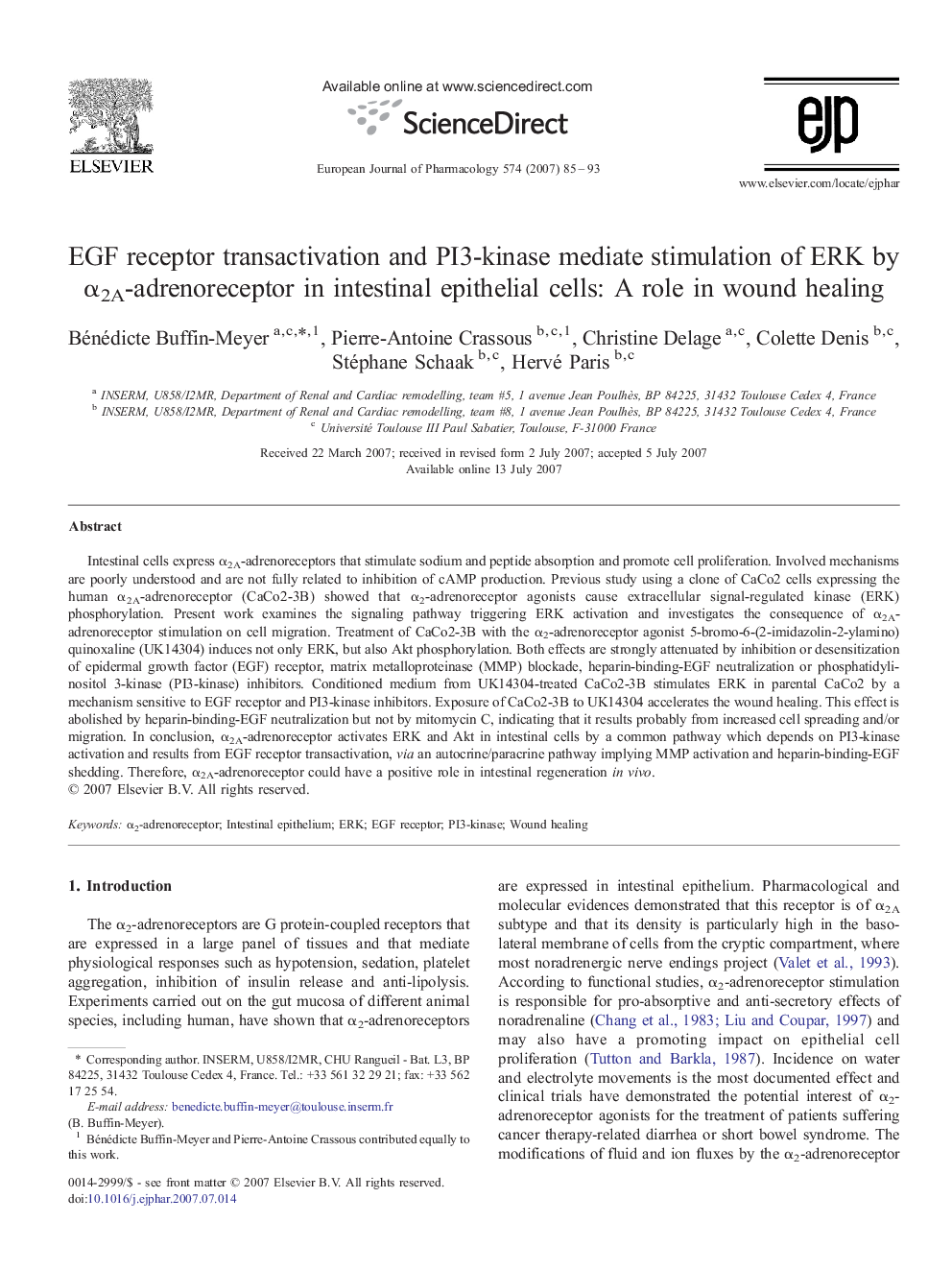| Article ID | Journal | Published Year | Pages | File Type |
|---|---|---|---|---|
| 2535813 | European Journal of Pharmacology | 2007 | 9 Pages |
Intestinal cells express α2A-adrenoreceptors that stimulate sodium and peptide absorption and promote cell proliferation. Involved mechanisms are poorly understood and are not fully related to inhibition of cAMP production. Previous study using a clone of CaCo2 cells expressing the human α2A-adrenoreceptor (CaCo2-3B) showed that α2-adrenoreceptor agonists cause extracellular signal-regulated kinase (ERK) phosphorylation. Present work examines the signaling pathway triggering ERK activation and investigates the consequence of α2A-adrenoreceptor stimulation on cell migration. Treatment of CaCo2-3B with the α2-adrenoreceptor agonist 5-bromo-6-(2-imidazolin-2-ylamino) quinoxaline (UK14304) induces not only ERK, but also Akt phosphorylation. Both effects are strongly attenuated by inhibition or desensitization of epidermal growth factor (EGF) receptor, matrix metalloproteinase (MMP) blockade, heparin-binding-EGF neutralization or phosphatidylinositol 3-kinase (PI3-kinase) inhibitors. Conditioned medium from UK14304-treated CaCo2-3B stimulates ERK in parental CaCo2 by a mechanism sensitive to EGF receptor and PI3-kinase inhibitors. Exposure of CaCo2-3B to UK14304 accelerates the wound healing. This effect is abolished by heparin-binding-EGF neutralization but not by mitomycin C, indicating that it results probably from increased cell spreading and/or migration. In conclusion, α2A-adrenoreceptor activates ERK and Akt in intestinal cells by a common pathway which depends on PI3-kinase activation and results from EGF receptor transactivation, via an autocrine/paracrine pathway implying MMP activation and heparin-binding-EGF shedding. Therefore, α2A-adrenoreceptor could have a positive role in intestinal regeneration in vivo.
